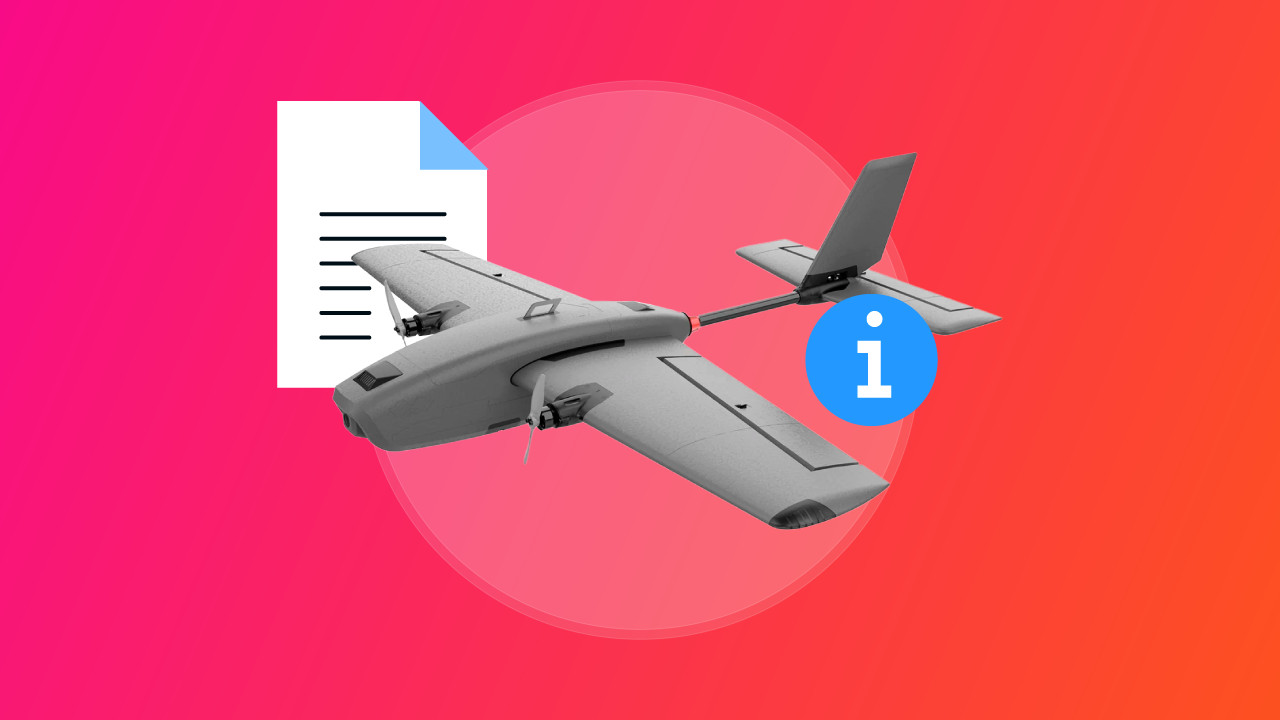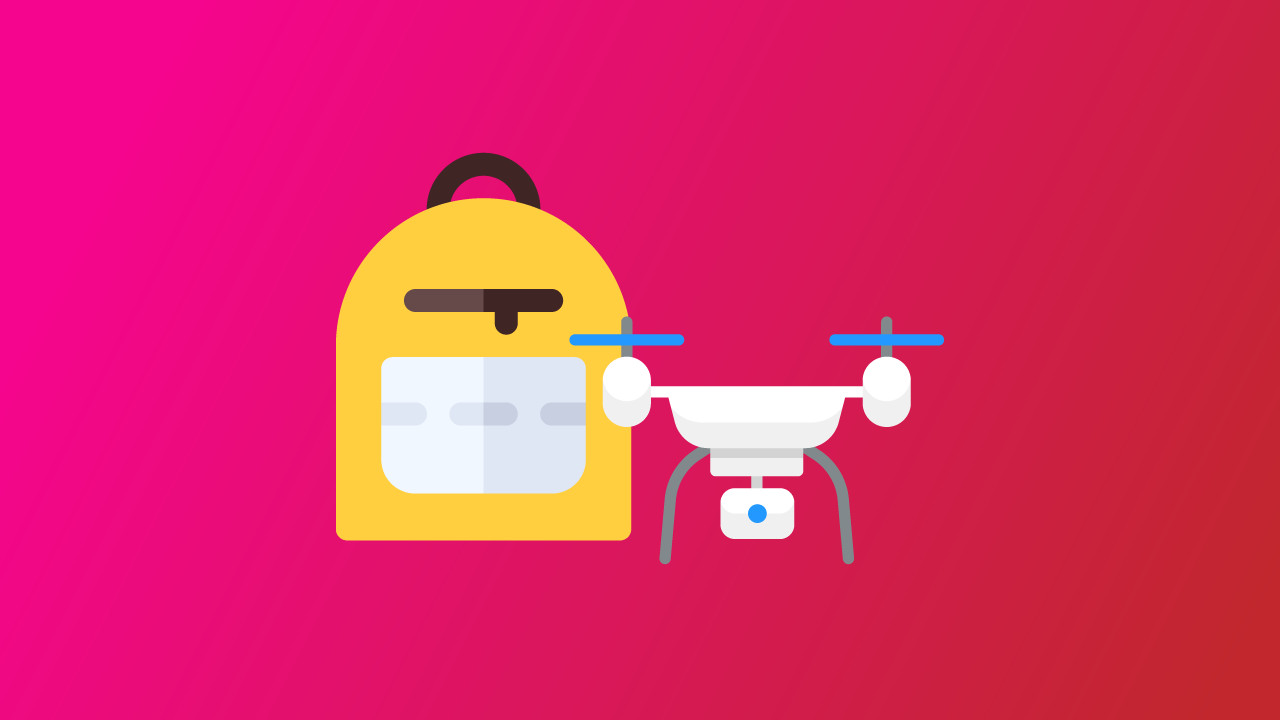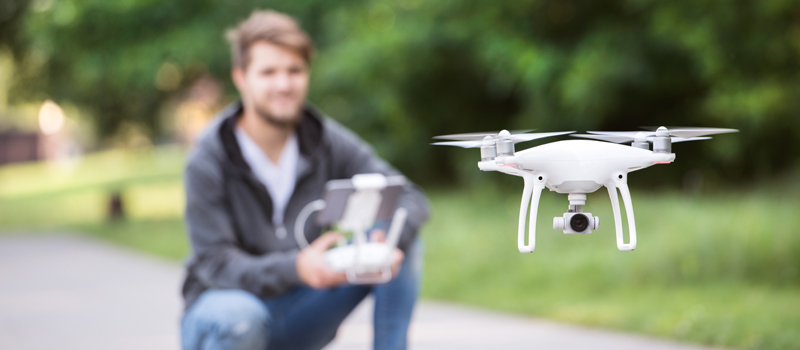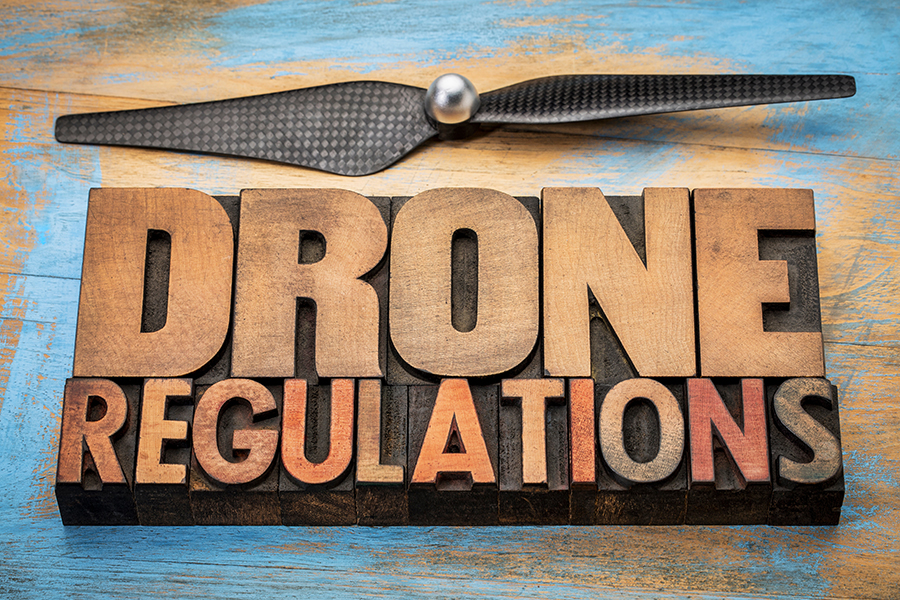-
Key Takeaways
-
What Are VTOL Drones?
-
Pros and Cons of VTOL Drones
- Advantages of VTOL drones
- Disadvantages of VTOL Drones
-
Industries Where VTOL Drones Excel
- Mapping and Surveying
- Agriculture
- Emergency Response
- Drone Delivery
-
Best VTOL Drones Available Today
- Best Overall
- Best for Beginners
- Best for Professionals
- Best Mid-Range Option
- Best for Emergency Response
-
Typical Cost of VTOL Drones
- Hobbyist VTOL Drones
- Mid-Range Commercial VTOL Drones
- High-End Enterprise VTOL Drones
-
Conclusion
VTOL, which stands for Vertical Takeoff and Landing drones, are Unmanned Aerial Vehicles (UAVs) that can lift off and land vertically.
They don’t need a long runway and can switch from flying straight up to flying horizontally.
You might have heard about them being used by the military or in futuristic air taxis. But now VTOL drones are being used for everyday tasks like farming, monitoring the environment, and even delivering goods.
VTOL is changing the way we do things with fancy new models and electric engines. They’re not just for big projects or the military anymore, and you’ll start seeing these drones being used in many different industries.
Let’s explore everything there is to know about VTOL drones!
Key Takeaways
- VTOL drones combine some of the best characteristics of both fixed-wing and multi-rotor drones.
- They are excellent options for many commercial or industrial applications, such as long-distance surveys and drone deliveries.
- Most VTOL drones available today are designed for enterprise use, and are thus very expensive (> $5000).
- There are some budget-friendly options for casual pilots who want to fly VTOL drones, but the selection is very limited.
What Are VTOL Drones?
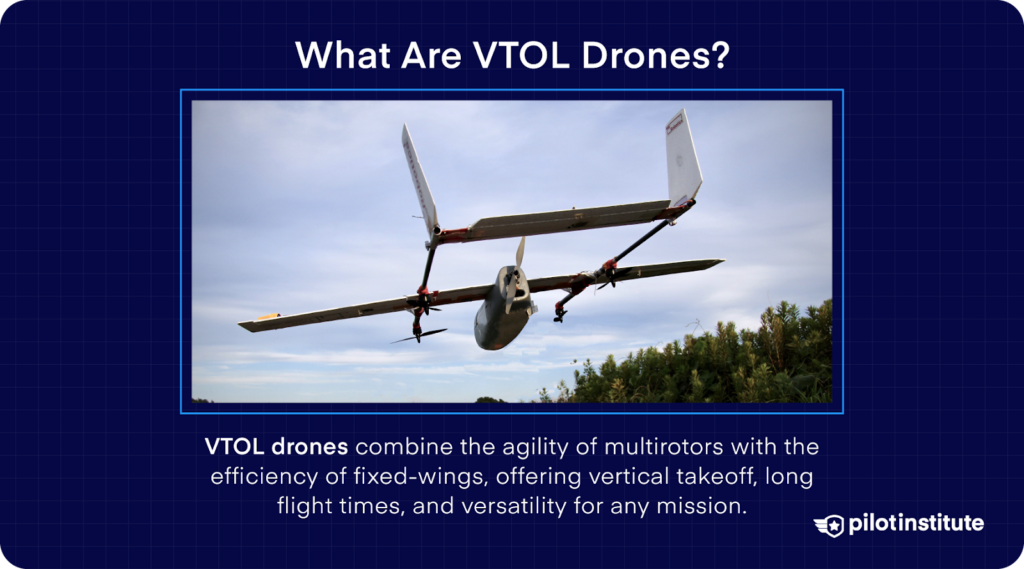
What makes VTOL drones so special? To get a clear picture, let’s first look at the two more common types of drones: multirotor drones and fixed-wing drones.
When you think of a typical drone, you’re probably picturing a multirotor.
These drones have a really big advantage of being able to take off and land vertically without needing a runway. Because their rotors can adjust direction and lift so quickly, multi-rotors are incredibly agile and responsive.
The downside? They’re power-hungry because the rotors need to keep spinning to maintain lift, which limits their flight time.
Now, think of a fixed-wing drone. These look more like small airplanes, they are able to use their wings to generate lift as long as they’re moving at a certain speed.
This makes them much more power-efficient, allowing for longer flight times, but they do need a sizable runway to take off and land safely.
VTOL drones combine the best of both worlds. They give you the long flight times of a fixed-wing with the easy, anywhere deployment of a multirotor.
This versatility makes them great for a wide range of missions and environments.
You might hear VTOL drones called “hybrid VTOL” or “fixed-wing VTOL.” All these terms refer to the same technology, and people often use them interchangeably.
Pros and Cons of VTOL Drones
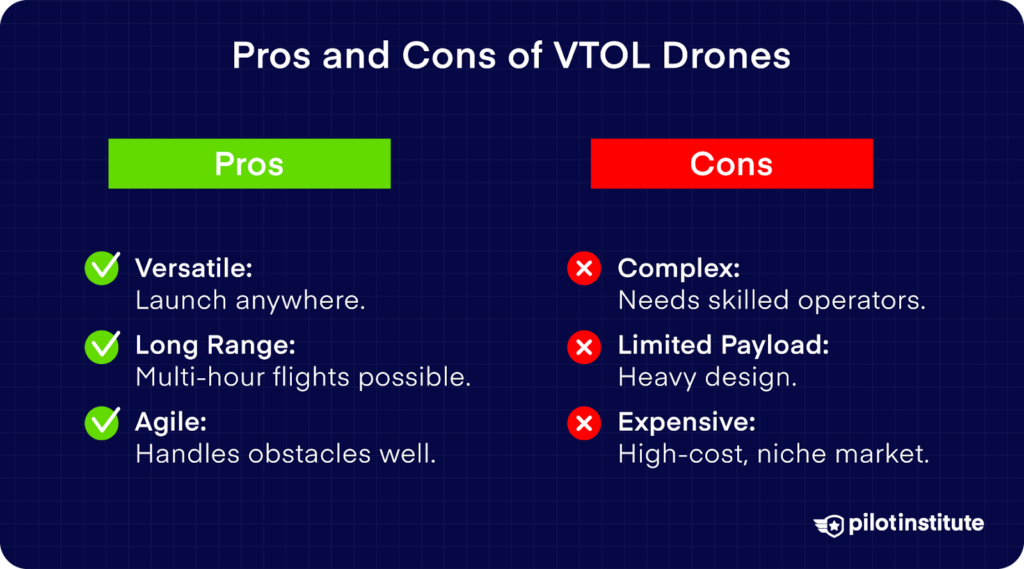
While it is true that VTOL drones offer many of the good things about both fixed-wing and multirotor drones, they are not without their drawbacks. A VTOL is simply another alternative that has both pros and cons.
Advantages of VTOL drones
Versatility
The number one reason to go for a VTOL drone is its incredible versatility.
Do you need to fly a drone across a large distance but need to launch near buildings and trees? Since the drone takes off and lands vertically, it can be deployed virtually anywhere.
This greatly simplifies the logistics of a drone mission and allows a mission to be carried out even in a place without a runway or with rugged terrain.
Since the wings of a VTOL can generate lift, they are also suitable for drone missions over long distances or requiring long flight time. This makes them excellent for mapping and other survey-type missions. VTOL drones are also being considered for drone deliveries.
Long Flight Range
True fixed-wing drones can fly for several hours on a single battery charge. This is a huge advantage over multirotor drones which typically can fly for only about 30 minutes or less before needing a battery swap.
VTOL drones fit nicely between these two drone types. The flight time of VTOL drones can vary widely, but there are several models that are capable of multi-hour missions.
This is still very impressive and makes VTOL drones suitable for a wide range of commercial and industrial applications.
Maneuverability
Need your drone to navigate around structures or other obstacles? Then a VTOL drone could be exactly what you’re looking for.
By combining rotors and a fixed-wing in one aircraft, VTOLs give you more control during flight. This is even more useful when maneuvering around buildings. You can benefit from the long flight time and have the range of a fixed-wing design.
Because of its versatility, VTOL drones are a great choice for flying in urban areas or remote locations alike.
Disadvantages of VTOL Drones
Complex Operations
Flying a VTOL drone essentially means flying both a multirotor drone and a fixed-wing drone. This is a bit more demanding, which means a VTOL drone will have to be flown by a skilled operator.
Since VTOL drones are far less common than their multirotor and fixed-wing counterparts, this also means that operators with VTOL experience are quite rare.
If you’re still a beginner in drone flight, you might want to stick to the more conventional multirotor or fixed-wing drones.
Limited Payload Capability
There is a lot of hardware that goes into a VTOL drone, which tends to make them bulky and heavy. This means that there is typically not a lot of extra lift capacity in a VTOL drone for complex payload.
Carrying a VTOL drone also won’t be easy!
High Cost
There are not many VTOL drones in the market right now, and those that are available are manufactured by very specialized companies.
This makes them a lot more expensive and thus inaccessible for casual users or commercial drone pilots who are just starting.
VTOL will likely cater more to bigger and more established drone service providers who are also working in high-value markets.
Industries Where VTOL Drones Excel
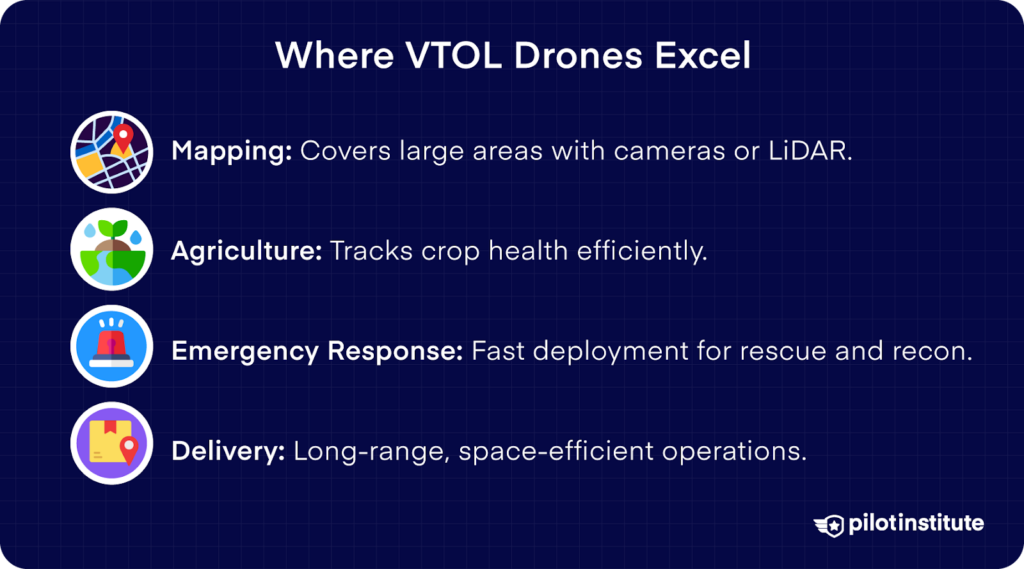
VTOL drones are very useful for applications where airborne or remote data needs to be collected over vast areas. Since a VTOL drone can fly for a very long time without needing to recharge a battery, it can collect a huge volume of data quickly and efficiently.
The vertical take-off and landing capability also means that they can be deployed in areas with rugged terrain where a runway typically is not available.
Mapping and Surveying
Any sort of mapping or surveying work can benefit greatly from a VTOL drone. These types of jobs can cover several hectares, making a long-distance drone highly essential.
A VTOL can be outfitted with cameras or LiDAR sensors to accomplish a topographic survey or mapping job, likely at a fraction of the time it would take a multirotor drone.
VTOL drones are also perfect solutions for aerial inspection along very long corridors, such as for inspection of power lines, pipelines, and coasts.
Agriculture
Agricultural monitoring through airborne surveys is a lot like survey work, except it uses multispectral sensors that can indicate factors like moisture content and plant health. Farms will have to do this type of survey regularly, so doing it quickly and efficiently can save a lot of time. VTOL drones
Emergency Response
Fast deployment is key to using drones for emergency response. A VTOL drone can be deployed just about anywhere and fly very quickly to the site of an emergency to provide valuable reconnaissance information, or to aid in search and rescue.
These drones can cover much larger areas than a multirotor drone but can be deployed in urban areas, unlike a standard fixed-wing drone.
Drone Delivery
Your next parcel delivery might very well be dropped off by a VTOL drone!
Drone delivery is very much still an emerging type of drone application, but this is a huge potential market for VTOL drones because they can fly much farther.
This means that delivery services do not need to be limited to 2-3 miles, which is typically the flight range of most multirotor drones. VTOL drones also do not need a lot of space to take off and land, making fleet management much cheaper and simpler.
Best VTOL Drones Available Today
Compared to multirotor or fixed-wing drones, there is a much smaller selection of VTOL drones in the market today. However, there are some really good options across a wide price range if you know where to look. We have compiled here a list of some of the best VTOL drones that you can buy right now.
Best Overall
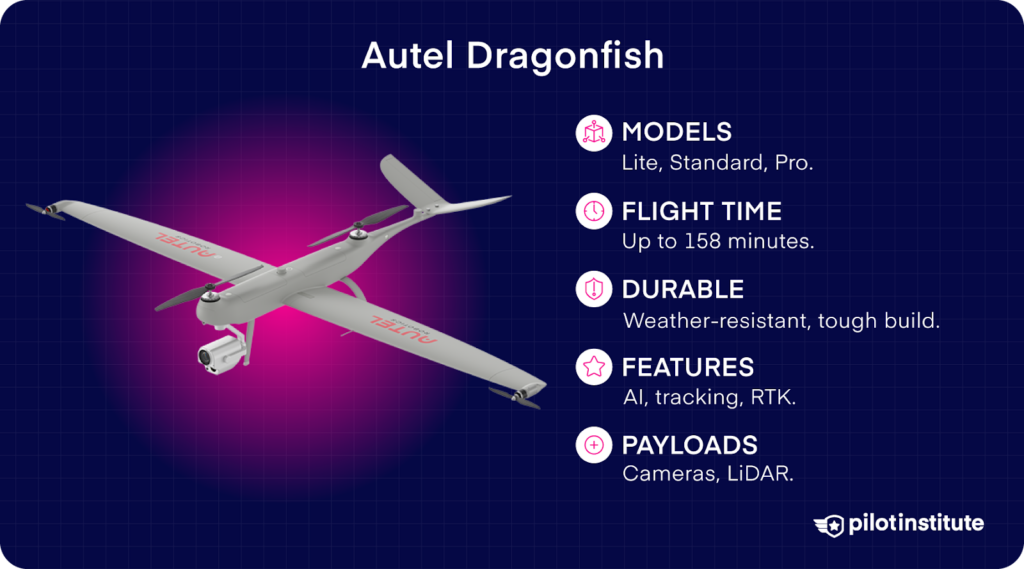
Autel Dragonfish
The Dragonfish line of enterprise drones is Autel’s entry into the VTOL drone market. The Dragonfish comes in three versions – the Lite, the Standard, and the Pro.
The Dragonfish Pro touts an impressive flight time of 158 minutes, certainly enough time to collect a huge amount of data during a drone survey.
The Dragonfish drone is designed to withstand complex environments and harsh conditions with its composite outer shell and carbon fiber core, giving it excellent wind resistance and IP43 weather resistance.
An array of backup systems and modules with AI performance monitoring means that the drone can detect faults early and respond accordingly.
With subject tracking capabilities and RTK compatibility, the Dragonfish can be a valuable tool for high-level industrial applications such as terrain mapping and inspection of infrastructure.
The drones are compatible with a range of payload options, with possibilities for wide-angle cameras, zoom lenses, infrared cameras, and LiDAR sensors.
Best for Beginners
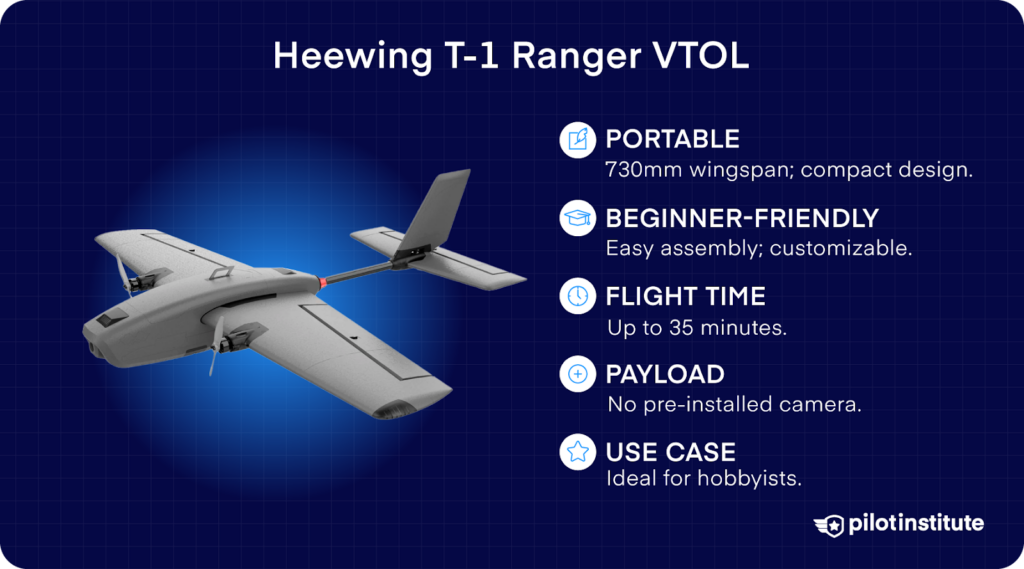
Heewing T-1 Ranger VTOL
The T1-Ranger from Heewing is probably one of the cheapest VTOL drones that you can buy today. For just about $200, you get a relatively small and portable drone with VTOL capabilities, albeit it does not come with a pre-installed camera.
The T1-Ranger is certainly one of the most beginner-friendly VTOL drones available today. Aside from its budget-friendly price, the T1-Ranger is easy to assemble, offers some customization options, and has a smaller form factor than other higher-end VTOL drones.
The maximum flight time of the T1-Ranger is rated only at 35 minutes, which sounds massively underwhelming compared to other VTOL drones.
It does not have a lot of built-in sensors, so doing any sort of commercial work with this drone seems like a stretch of its capabilities. Still, it’s a good entry-level option for those who want to experience flying a VTOL drone.
Best for Professionals
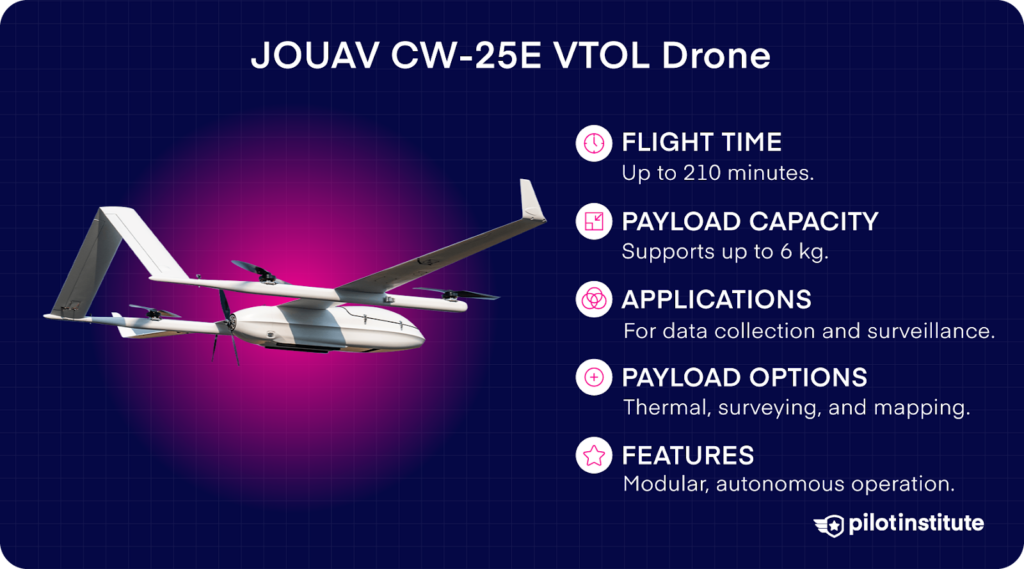
JOUAV CW-25E VTOL Drone
JOUAV is a fairly well-established enterprise drone brand, so they have multiple VTOL drones available. We are choosing to highlight just one to represent the entire product line.
The CW-25E VTOL drone is rated for a maximum flight time of 210 minutes and can support payloads of up to 6 kilograms.
This is a large, highly technical, and expensive drone that is designed for high-level data collection and aerial surveillance work. JOUAV also offers several payload options for thermal imaging, surveying, and mapping.
The CW-25E VTOL drone is certainly one of the more premium options in the VTOL drone market. It is a highly reliable drone with excellent performance that yields better results and higher efficiencies.
Best Mid-Range Option
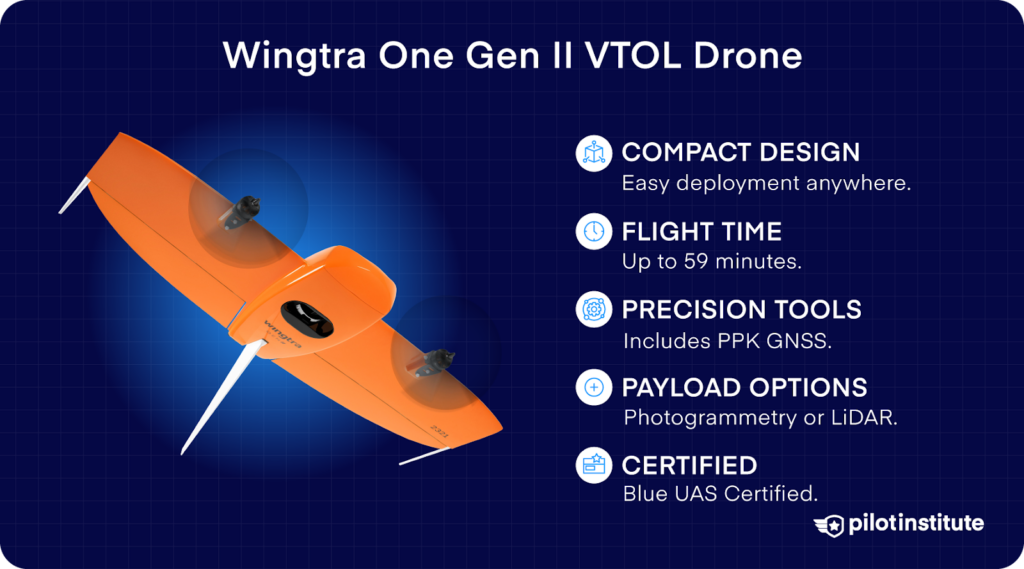
Wingtra One Gen II VTOL Drone
The WingtraOne Gen II has become one of the most well-known VTOL drones in recent years. It is a very compact drone, and this small footprint makes the WingtraOne very easy to deploy in just about any environment.
This VTOL drone is rated for 59 minutes of flight time and comes with options for photogrammetry (full-frame 61 MP camera) or LiDAR. It has an onboard PPK GNSS receiver, allowing for high-precision mapping without the use of ground control points.
It is also a Blue UAS Certified drone, which might be a crucial decision point for drone services related to government work.
Best for Emergency Response
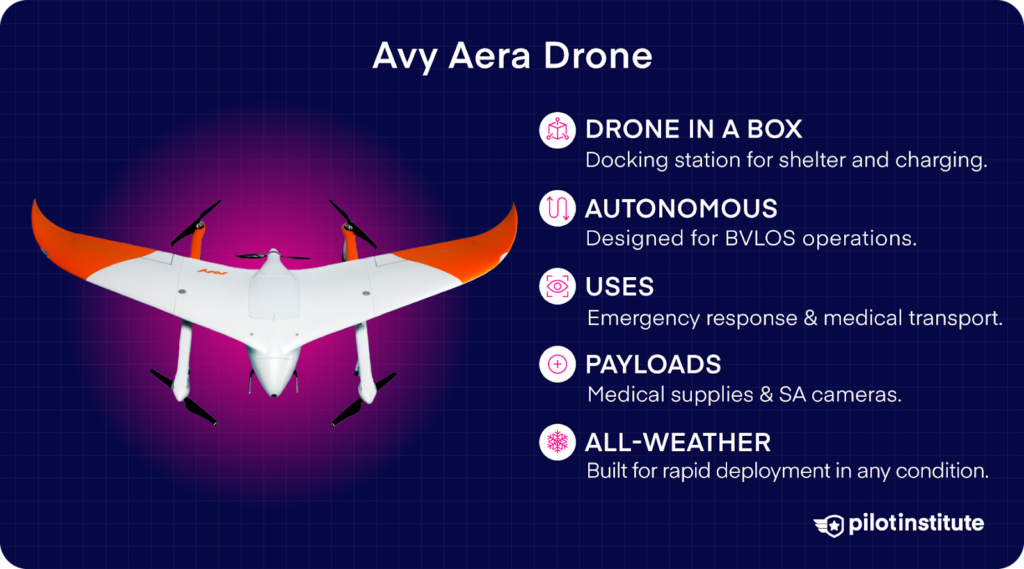
Avy Aera
The Avy Aera is marketed as a “drone in a box.” The drone takes off from and lands in a docking station, which also serves as its shelter and charging station. It is also designed as a highly autonomous BVLOS drone for emergency response and short-term drone delivery.
The Avy Aera is a highly specialized drone that is designed for rapid response and thus is not exactly equipped for standard surveying and mapping.
Its primary payload options are for medical transport and a camera for situational awareness. It is made to respond quickly and in just about any environment and weather.
Typical Cost of VTOL Drones
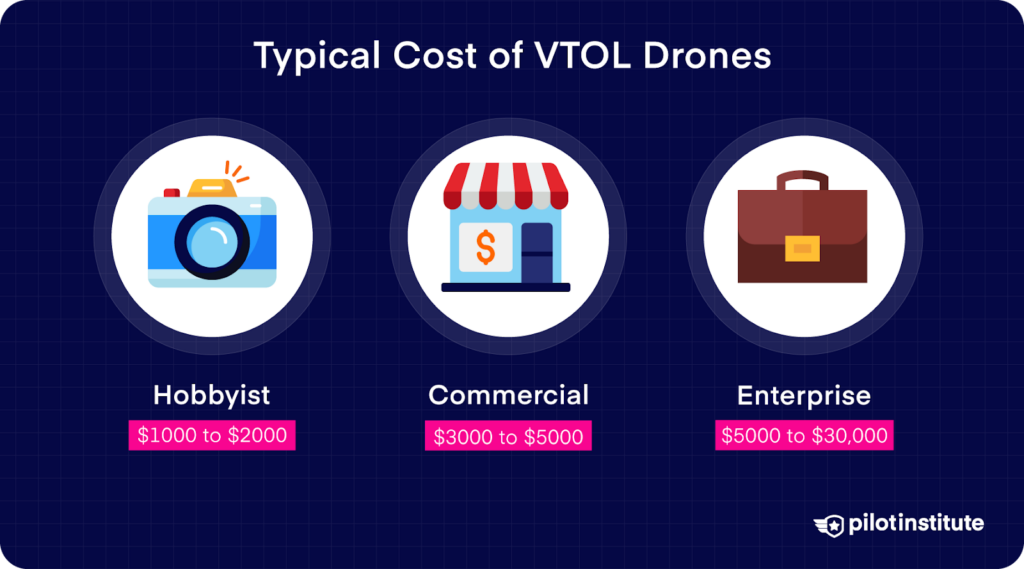
If you are considering buying a VTOL drone, then you must take note that there is a very wide price range for these drones.
There are not many drone operators who are actively looking for VTOL drones, so the market is quite small and very specialized. Knowing exactly how you want to use your VTOL drone can help narrow down the choices.
Hobbyist VTOL Drones
As indicated in the list above, VTOL drones can go for as low as $200. This is very much a low-end option and likely does not come with a pre-installed camera or any sophisticated sensors.
There are also several hobbyist VTOL drones, such as the Ripmax Transition VTOL, that sell for about $500 or lower.
These drones in the range of $1000 to $2000 are typically still designed for casual flights. These have more advanced sensors and flight controllers, which means their flight performance will cater more to the competitive drone pilots. These are great for hobbyists who like to take their craft a little more seriously.
Mid-Range Commercial VTOL Drones
For commercial users, there is a selection of VTOL drones that can range between $3000 to $5000. These drones are typically larger and built with more robust materials, allowing them to handle more types of weather and fly for longer periods.
Notable drones in this category include the Foxtech Loong 2160 VTOL Drone and the T-Motor T-Drone VA17 VTOL drone.
Drones in this category are capable enough to carry out professional drone work, such as surveying and mapping.
Not only can they fly long distances on a single battery charge, but they can typically carry payloads of up to 1 kilogram. This is enough for a high-resolution camera or even a multispectral sensor.
High-End Enterprise VTOL Drones
For high-level drone work, enterprise VTOL drones can range from $5000 to $30,000 or even more. These are highly advanced equipment capable of semi-autonomous flight, subject tracking, and obstacle detection. These are also quite bulky, giving them more lift thus longer flight times and higher payload capability.
Most manufacturers of high-end drones also offer a wide range of payload options catering to different drone use cases.
These can include infrared cameras, multispectral sensors, LiDAR sensors, and cameras with wide-angle lenses or zoom lenses.
There is a huge range of these enterprise VTOL drones out there, with the Wingtra One and Autel Dragonfish as some of the most well-known examples.
Conclusion
VTOL drones are reshaping how we think about aerial operations altogether. The technology of drones is moving fast, and these hybrid models are now cleaner and quieter in flight.
These drones have gone from futuristic tech to practical tools. They deliver goods in crowded cities and can map remote areas that are hard to reach.
And it’s not just about what they can do today; as the technology improves these drones will only get faster and better at what they do.
If you’re considering adding remote piloting as one of your new skill sets, now’s the time to dive in and see where this evolving technology can take you.
